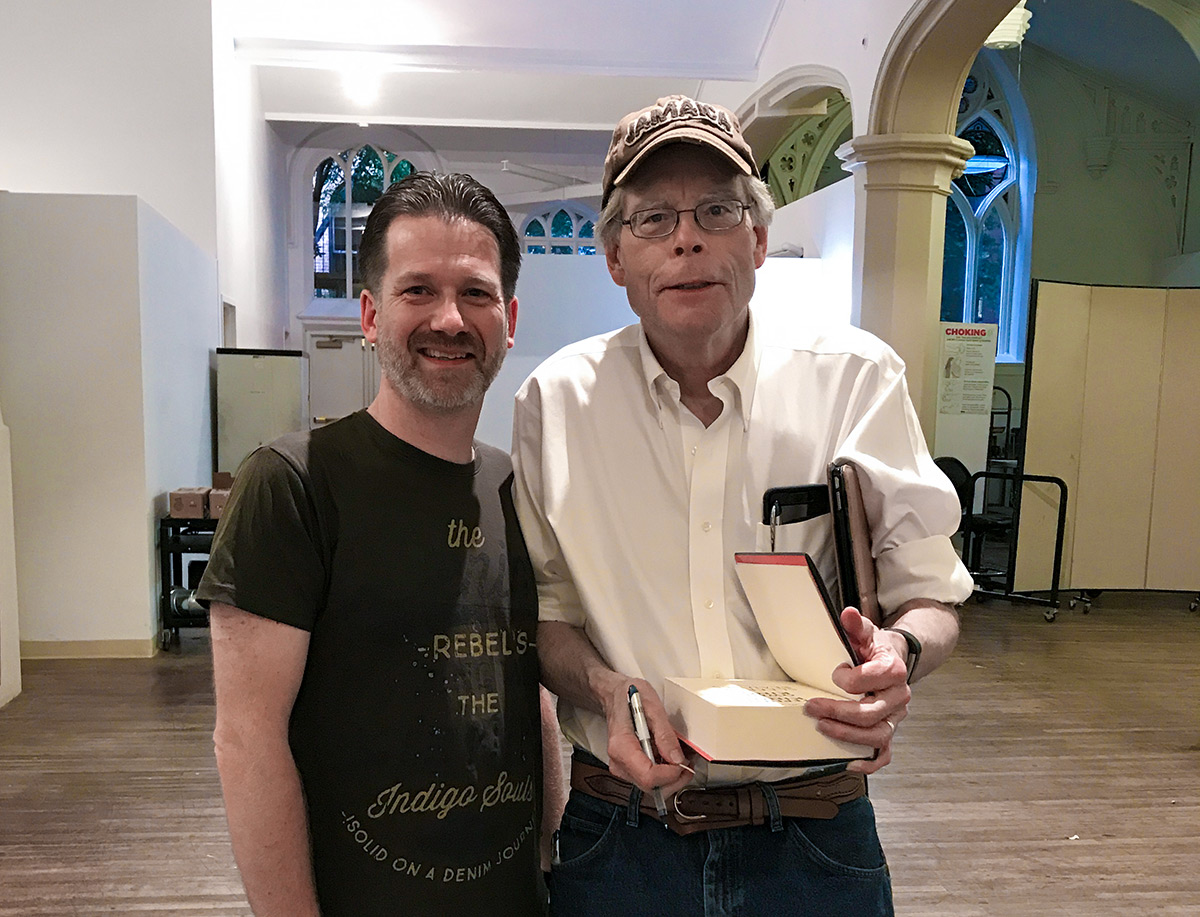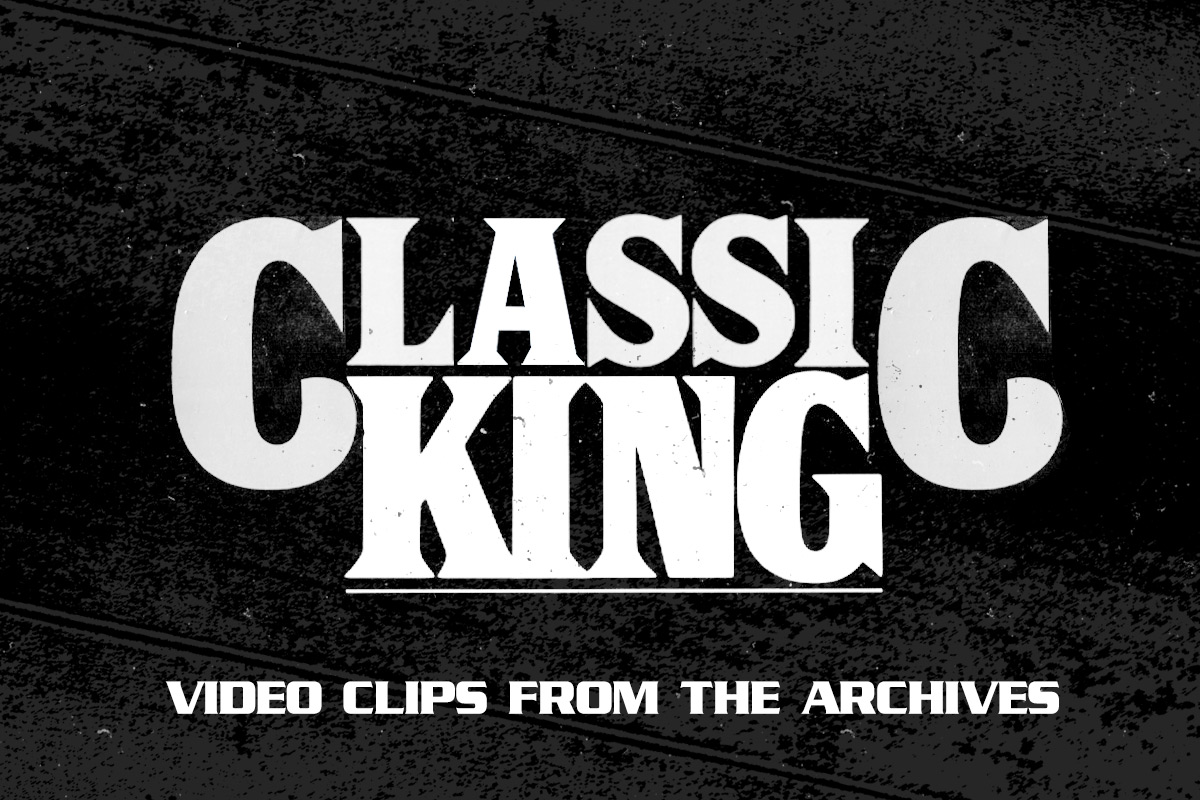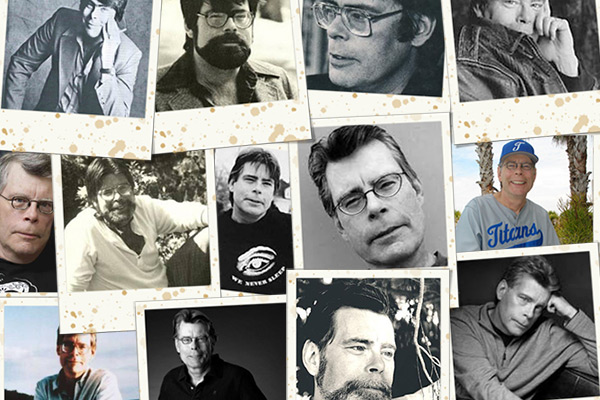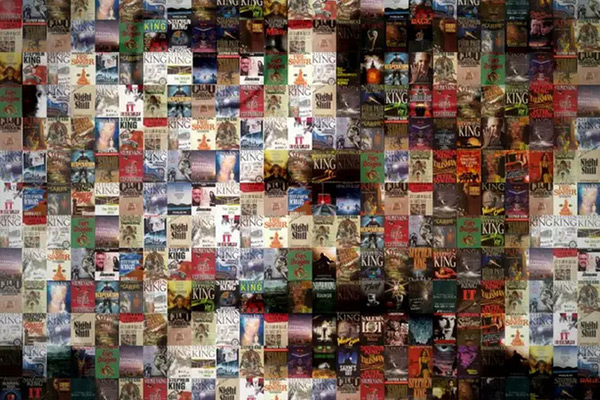Brandon Kihl
Posted: May 24, 2006
_
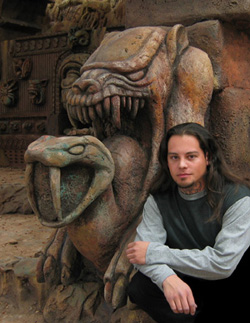 Lilja: Tell me a bit about yourself. Who are you and what have you done?
Lilja: Tell me a bit about yourself. Who are you and what have you done?Brandon Kihl: I am a self-trained sculptor and design artist currently living in Arizona (USA). I’ve only been involved in the film industry since 2004. ‘Desperation’ was the first television movie production I’ve worked on, and it was a great experience. I’ve also contributed prop designs and creature character design concepts to other film and entertainment projects. Recent projects include foam carved props for the film ‘Roadhouse 2: Last Call’, and a fantasy sculpture of the Loch Ness Monster skull used as a promotional prop on the book tour for Steve Alten’s novel ‘The Loch’, published by Tsunami books.
Lilja: How did it happen that you got to work on Desperation?
Brandon Kihl: Mistaken identity, I was in the right place at the right time. I was mistaken for a crew member while shopping at a local hardware store in Bisbee, Arizona. Apparently, the crew had just moved into town and was setting up offices, but this was the first I had heard about the project. I left the store and drove to my brother’s house to get my portfolio, since I had only arrived in town the previous night. Later that day, I met with the local construction coordinator Terry Kempf, who scheduled a subsequent meeting one week later with the art director Jason Weil, and the production designer Phil Dagort.
Initially, I was asked to sculpt one of the small Can Tah figures using only a few reference photos which they provided. The next day I drove to the art department and showed them my version of the ‘Little God’ figure. They liked my concept and decided to have me sculpt all six designs to be used in the film.
Within a few weeks the production designer offered me the opportunity to sculpt figures for the Pirin Moh cave set. During that process, I also became involved with producing other assorted props such as the detailed human skull replicas, railway spikes, rock props, and decorative relief foam carvings. All together, I worked on the project for over two months. It was a great opportunity to observe some of the filming on the various sets, and to meet the actors and crew.
Lilja: What did you know about Desperation and Stephen King before this? Were you a fan?
Brandon Kihl: I’ve been a fan of Stephen King for many years, but I had never read ‘Desperation’ until the week I was hired to work on the film. For my second meeting in the art department I had the background information from the story to work up further concepts for the prop sculpture designs. It was fun being able to read the script after having just read the book, now knowing the actors who would be portraying the characters on screen.
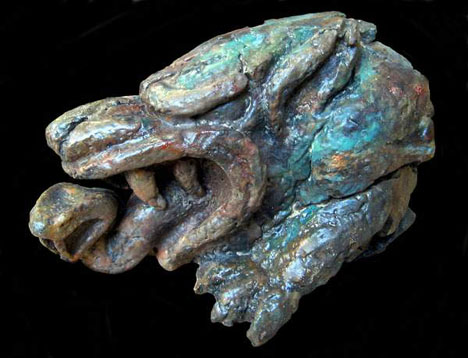
Lilja: How much freedom did you get in creating the Can Tah and the other stuff? Was it up to you or were you given strict guidelines?
Brandon Kihl: The production designer and the art director actually gave me a lot of freedom to design the sculptures based on reference materials from the story, and photos of various animals and primitive artifacts. Mick Garris had the final say in the look of the first Can Tah figure which set the design tone for the other figures. I sculpted three versions of the first design, two versions of the second, and one version for each of the remaining four designs. Afterwards, I was given a lot of freedom in designing the main set sculptures including the large pillar creatures on the Pirin Moh shrine.
Lilja: What, of the things you did for Desperation, are you most proud of?
Brandon Kihl: That would have to be the large doglike pillar creatures on the Pirin Moh set. Each figure was individually carved in foam and measured over four and a half feet tall. They are actually enlarged versions of the Can Tah figure concepts and have a snake tongue protruding from a snarling creature’s mouth. The guys in the art department agreed that they wanted something large, doglike, and scary. I sketched a couple of line drawings of a bear/wolf and snake tongue combination and they liked the idea. I spent the next two weeks carving each figure in foam.
Lilja: What was the most difficult?
Brandon Kihl: That would also be the large pillar creatures. There was so much foam carving and detailing involved so the figures would match as close as possible without building a mold and making an exact replica. The small handheld Can Tah figures were also very involved because each of the six different designs were sculpted, molded, and cast to produce twenty replicas of each design. The human skulls were cast hydrostone replicas of a real human skull which I had molded a couple of years earlier. They looked incredibly authentic after creating the assorted damage, missing teeth, and aged bone effects.
Lilja: The China Pit looks very impressive. Was it complicated to do?
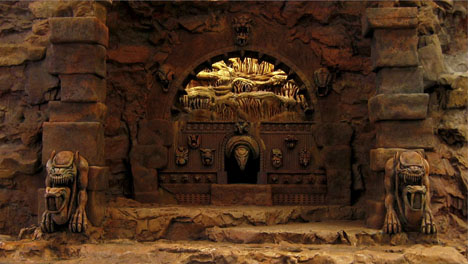
Brandon Kihl: The mineshaft and demon’s lair in the cave was actually a combination of several different set sections and the result of many people contributing to the overall construction. I worked specifically on the shrine details including the wall carved faces, vulture head, and large pillar creatures. A sculptor friend assisted on the foam carving of the calcite rock-flow in the shrine archway. The construction crew built huge sections of moveable walls and the crystal pit was done in three sections, each filmed separately. The scenic painters did a great job painting all of the sets and integrating the foam carvings.
Lilja: So, what’s up next for you? More movies?
Brandon Kihl: I am currently working on a feature film titled ‘The Kingdom’, for Universal Studios which is filming here in the desert outside of Phoenix, Arizona. This one is a war movie, so there won’t be any creatures or monsters.
I hope to get involved with some sci-fi and horror films because it means more creature designing, sculpting, and assorted prop building. I often enjoy the Behind the Scenes documentaries of film productions more than the movie itself, because you get to see all of the work that goes into creating the props, sets, and special effects that people only see as the final product on screen. Most people have no idea how much work, and how many people are involved in producing a movie. Each project is a completely different experience and you get to meet some incredibly talented people.
You can see more of Brandon's work on his website

